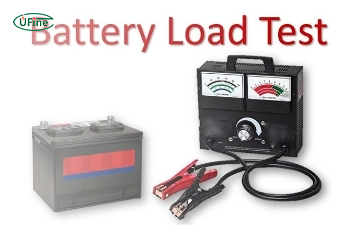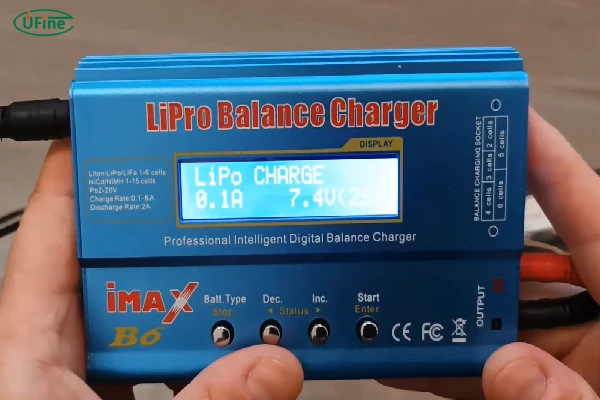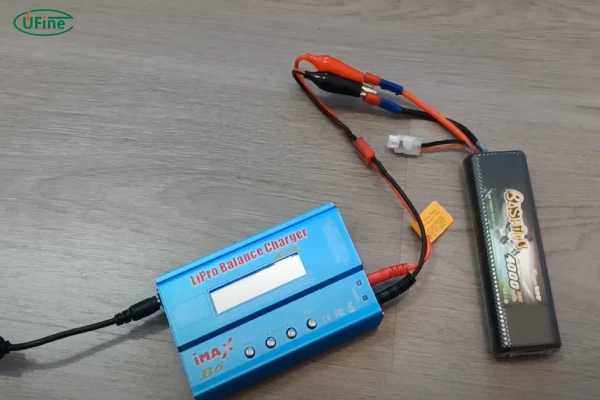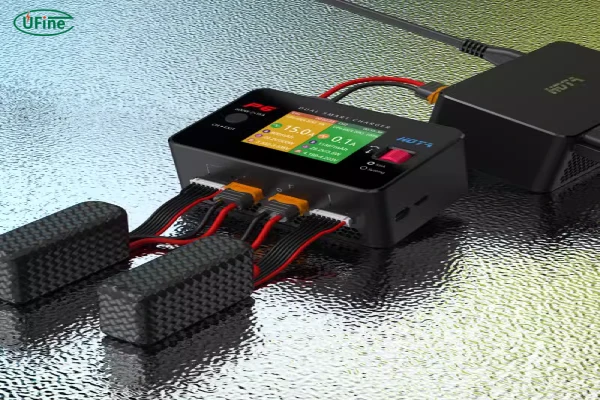
- Part 1. What is a LiPo balance charger?
- Part 2. Basic components
- Part 3. Why do LiPo batteries need to be balanced?
- Part 4. Do all LiPo batteries need a LiPo balance charger?
- Part 5. How does a LiPo balance charger work?
- Part 6. How to use a LiPo balance charger?
- Part 7. LiPo balance charger plug types
- Part 8. How long does it take to balance charge a LiPo battery?
- Part 9. Final thoughts
If you’re into RC models, drones, or any electronics powered by LiPo (Lithium Polymer) batteries, you probably know that these batteries need special care. LiPos are powerful but fragile, and they need to be charged carefully to perform their best. This is where a LiPo balance charger comes into play. Not just any charger will do for LiPo batteries—if you want to avoid risks like overheating, poor battery performance, or even fire, a balance charger is crucial.
But what exactly is a LiPo balance charger? Why are they so important for these batteries? And how do you use one safely? This guide will walk you through everything you need to know about LiPo balance chargers. By the end, you’ll not only know how to charge your batteries properly but also how to extend their lifespan and maximize their performance.
Part 1. What is a LiPo balance charger?
A LiPo balance charger is a specialized charger designed to charge LiPo batteries safely and efficiently by monitoring and balancing each cell within the battery. Unlike standard chargers that push power into the battery without regard for each cell’s voltage, a balance charger ensures every cell within the LiPo battery reaches the same voltage level.
Why is this important? LiPo batteries are made up of multiple cells, typically 2, 3, or even 6, and each cell’s voltage can drift over time. If one cell charges faster than another, it can cause serious problems—overcharged cells can overheat or swell, while undercharged ones can lose capacity. The balance charger addresses these issues by equalizing the voltage across all cells, ensuring that they all reach a safe and consistent level.
Features of a LiPo Balance Charger:
- Individual Cell Monitoring: Monitors each cell’s voltage to maintain balance.
- Safety Protections: Provides safeguards like overheat protection, overcharge prevention, and short-circuit protection.
- Multiple Charging Modes: Offers options like balance, fast, and storage modes for different situations.
- Compatibility Across Configurations: Works with various cell setups (e.g., 2S, 3S, 4S).
With a balance charger, you can keep your LiPo batteries healthy, stable, and safe for repeated use.
Part 2. Basic components
Let’s take a closer look at the components that make a LiPo balance charger work effectively. Each part plays a key role in keeping your battery’s cells balanced and charged properly.
- Main Charging Port: The primary connection to your battery, where most of the charge flows.
- Balance Port: A separate port that connects to each individual cell through the balance lead. This allows the charger to monitor and adjust each cell’s voltage individually.
- Display Screen: Shows important information like charge level, voltage, and current, allowing you to monitor the charging process.
- Control Buttons: Used to select the appropriate charge settings based on your battery type and charging needs.
- Cooling Fan: Prevents the charger from overheating by dissipating heat during the charging process.
- Safety Features: Most chargers include multiple safety features such as temperature monitoring, reverse polarity protection, and overcharge protection.
Understanding these components will make it easier to use the charger properly and get the most out of it, ultimately helping to extend the life of your batteries.
Part 3. Why do LiPo batteries need to be balanced?
LiPo batteries are powerful, but they’re also delicate. Over time, the individual cells in a LiPo battery can become unbalanced. When cells are unbalanced, it means that some cells are holding a different voltage than others, which can lead to several issues:
- Overcharging Risk: If one cell charges faster than the others, it can reach full capacity while others lag. This can lead to overcharging of the faster cell, which can overheat and become dangerous.
- Reduced Capacity and Performance: When cells are unbalanced, your battery won’t perform as well. One weaker cell can limit the entire pack’s voltage, reducing capacity and power.
- Shorter Battery Life: Consistently unbalanced cells wear out faster, shortening the overall lifespan of the battery.
Balancing prevents these issues by ensuring every cell reaches the same voltage level. This is why a LiPo balance charger is essential for every LiPo battery owner—it’s not just a matter of performance but of safety and longevity as well.
Part 4. Do all LiPo batteries need a LiPo balance charger?
In short, yes—all LiPo batteries should be charged with a balance charger. Charging without one increases the risk of unbalanced cells, which can be both unsafe and costly. Without a balance charger, one cell may receive too much charge, while another gets too little. Over time, this unbalance can damage the battery and increase the risk of failure.
Even if your LiPo battery seems to charge fine on a standard charger, the long-term effects of not balancing can lead to a shorter battery lifespan and potential safety hazards. Using a LiPo balance charger is a small investment that can save you from these risks, ensuring that every charge is stable, consistent, and safe.
Part 5. How does a LiPo balance charger work?
So, how does a LiPo balance charger actually balance the cells? Here’s the basic process:
- Voltage Checking: When you connect the battery, the balance charger reads the voltage of each individual cell.
- Adjustment: If any cells are higher than others, the charger reduces the charge to those cells while giving more power to the lower ones, bringing them to the same level.
- Balancing: Once all cells are equal, the charger continues charging at a constant rate until each cell reaches the full voltage safely.
- Completion: When every cell is at the same voltage, the charger stops the current, ensuring no cell is overcharged.
This process, though simple, is crucial for battery health. By balancing each cell, you avoid overcharging or undercharging individual cells, maximizing the battery’s performance and lifespan.
Part 6. How to use a LiPo balance charger?
Using a LiPo balance charger is straightforward but requires careful attention to settings and safety. Here’s a step-by-step guide to help you charge your battery properly.
- Set the Charge Rate: Match the charge rate (in amps) to your battery’s capacity. A typical recommendation is a 1C rate, which equals the battery’s capacity in amps.
- Select Cell Count: Choose the correct number of cells (e.g., 2S, 3S) based on your battery’s configuration.
- Connect the Battery: Attach both the main power plug and the balance lead to the charger’s ports.
- Choose Charging Mode: Most chargers have modes like Balance, Fast, or Storage. Select “Balance” for a full and safe charge.
- Start Charging: Initiate the charging process and monitor the display for progress.
- Monitor Safety: Avoid charging in hot or enclosed spaces. Always watch for any signs of overheating or battery swelling.
- Complete Charge: Once charging is finished, disconnect the battery and store it in a safe, cool place.
Following these steps carefully will help you get the best performance out of your battery while keeping it safe.
Part 7. LiPo balance charger plug types
The plug type on a LiPo balance charger is crucial because it ensures a secure, reliable connection. Here are some common plug types you may encounter:
- XT60: A popular choice, capable of handling high currents, commonly used in RC and drone applications.
- XT90: Similar to XT60 but designed for even higher current needs, ideal for larger battery packs.
- Deans (T-Plug): Found in many RC models; handles a moderate amount of current.
- EC3 and EC5: Known for reliable connections, often used in various hobby electronics.
- JST: Smaller plug for lower-current applications, suitable for lighter devices.
- HXT: Used in older RC applications, less common today.
Choosing the correct plug type for your charger and battery ensures a stable charge and helps prevent accidental disconnects during the charging process.
XT60 vs. XT90 Battery Connector Comparison
Part 8. How long does it take to balance charge a LiPo battery?
Charging time for a LiPo battery depends on several factors:
- Battery Capacity: Larger capacity batteries (e.g., 5000mAh) naturally take longer to charge than smaller ones.
- Charge Rate: Setting a lower charge rate (such as 0.5C instead of 1C) takes longer but is gentler on the battery.
- Cell Count: Batteries with more cells, like 4S or 6S, require more time for balancing due to the additional cells.
Generally, it takes 45 minutes to 2 hours to balance charge a standard 2S or 3S LiPo battery. Higher cell-count or larger-capacity batteries may take even longer. Patience is key here; charging slower at a lower current is often safer and more beneficial in the long run.
Part 9. Final thoughts
A LiPo balance charger is more than just a charger—it’s a key to safe, long-lasting performance for your LiPo batteries. By balancing each cell, it ensures the battery charges evenly, preventing overcharging, overheating, and reduced lifespan. So, if you’re serious about extending your battery’s life and maintaining safe, reliable performance, investing in a quality LiPo balance charger is essential. Remember to use it correctly, monitor your settings, and store your batteries safely. Following these steps will ensure that every charge you give your LiPo battery is safe, efficient, and maximizes its potential.
Related Tags:
More Articles

Battery Load Test: A Comprehensive Guide
Step-by-step battery load test guide for car, solar & industrial use. Learn how to load test a battery, interpret voltage charts, and avoid common mistakes.
The Comprehensive Guide to Battery Balancing and Battery Balancer
Discover how battery balancers improve lithium battery performance, lifespan, and safety. Learn types, functions, and tips to choose the right balancer.
What Is the Best Voltage for a Chainsaw Battery?
Compare 12V-80V chainsaw batteries for light pruning, medium firewood, and professional cutting. See best battery chainsaw with runtime charts and safety tips.
Lithium VS. Alkaline Batteries: A Comprehensive Comparison
Lithium batteries last 3–7× longer than alkaline and perform better in cold weather. Compare lifespan, cost, safety, and best uses to choose the right battery.
Comparing Lithium-Sulfur and Lithium-Ion Batteries: Which is Right for You?
Compare lithium-sulfur (Li-S) and lithium-ion batteries on energy, lifespan, cost, safety, and applications. Best choice for drones, EVs, and electronics.





